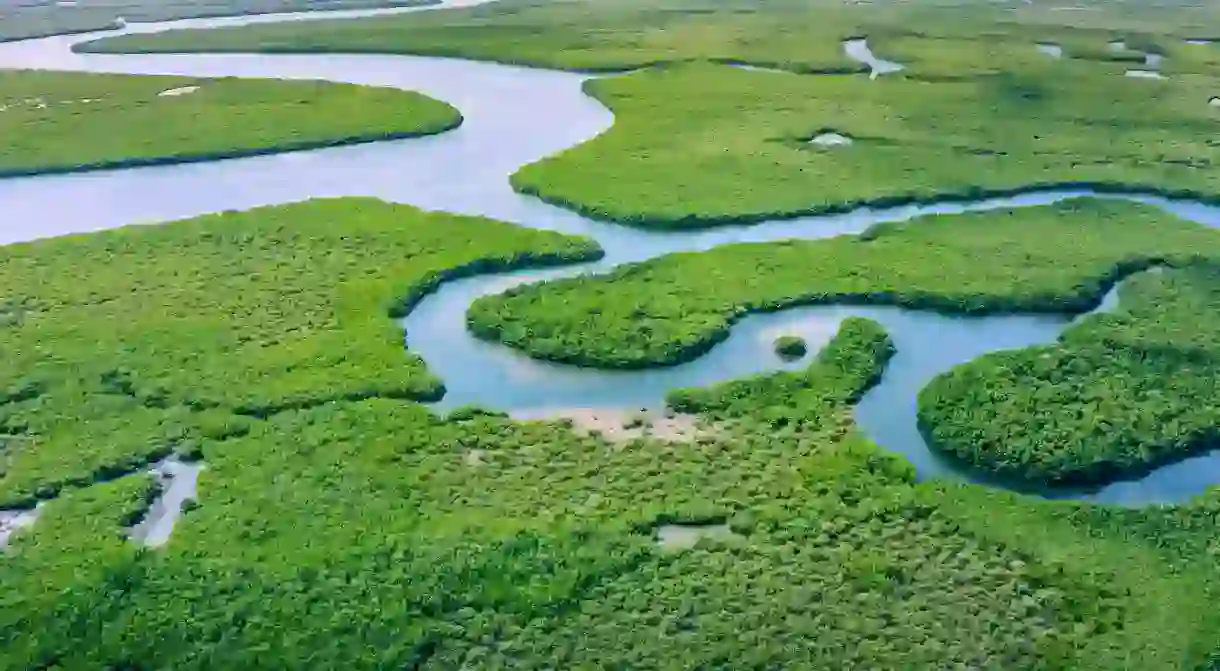The Story Behind How the Amazon Rainforest Got Its Name

Fish that leap to feed from trees. Fables of fabulous pottery. Fighting women with braided hair. The Amazon has oozed mythic appeal since the first explorers clapped eyes on it. This is how the biggest wonder of the natural world got its magnificent name. Probably…
The Amazon is not simply a rainforest or a river. It’s a continent of landscapes: a flowing sea of myriad streams and lakes holding one-fifth of all the world’s running water, and the home of myriad tribes. Alongside rainforests are table-top mountains, savannahs and igapó swamps where fish eat fruit from the branches of trees. The first Europeans to come here were so awe-struck they could only describe the Amazon in mythological terms – which is probably how it got its name.
The first European to clap eyes on the Amazon was the Spanish conquistador Francisco de Orellana, who stumbled on the great wilderness by accident in 1542. He had been recruited by Gonzalo Pizarro, the brother of the conqueror of Peru, to join an army that in 1541 set out to explore the forests of eastern Ecuador, in search of cinnamon and gold. Pizarro had reports from indigenous Andean peoples of lands beyond the mountains, rich with spices and precious metals.

After nearly a year wandering the forests, finding nothing but water and trees, and with half his army dead from starvation and disease, Pizarro dispatched Orellana downstream at the modern-day River Cosa together with 60 men and all of the firearms – to find provisions. Orellana never returned to Pizarro. But he did return to Spain.
After a week of fruitless drifting along the Coca and then the Napo, seven of Orellana’s crew had died of starvation. The rest were on the verge of mutiny. They forced Orellana to continue east. And it was then they met their first tribe – the Irimarai (probably the modern Ticuna) – who, after initial panic, embraced the gaunt Spaniards, fed them, clothed them, helped build new boats and dispatched them into the Amazon River itself.
Further east still, the Spanish met the Machiparo, who reared giant fish in artificial lagoons, and another group that had an advanced lowland civilization: roads radiated out from the villages, storehouses were abundantly stocked with cotton, maize, manioc and glazed pottery that the Spaniards declared was superior to any found in Europe.

On June 3, 1542, the expedition reached the mouth of a black river, which they called the Rio Negro (near modern-day Manaus) – a name that survives to this day. It was here that the Amazon association began – when Orellana’s men encountered a tribe who erected giant jaguar totems in homage to their rulers, who they said were a tribe of fierce women. Orellana referred to them as Amazons – after the legendary female warriors of Asia Minor written about by Herodotus and Homer.
Further downstream, they were attacked by a dozen of these South American Amazons (probably Tapuya), whom Gaspar de Carvajal, the expedition’s chronicler, described as “very white and tall, with very long hair braided and wound about their heads. They are very robust, and go naked with their private parts covered, and their bows and arrows in their hands, doing as much fighting as ten Indian men.”
The connection with Homer’s Amazons further consolidated, Orellana eventually made it to the river’s mouth, to Venezuela and eventually to Spain. When de Carvajal’s expedition chronicles became famous, so did the myth of the South American warrior women. Eventually, the region was named in their honor.
Another possible source of the name is from a Tupi word meaning “boat breaker.” The Tupi language, while not used by Amazon peoples (only by indigenous tribes from the Atlantic coast) was a lingua franca in colonial Brazil – alongside Portuguese. But that’s another story…













